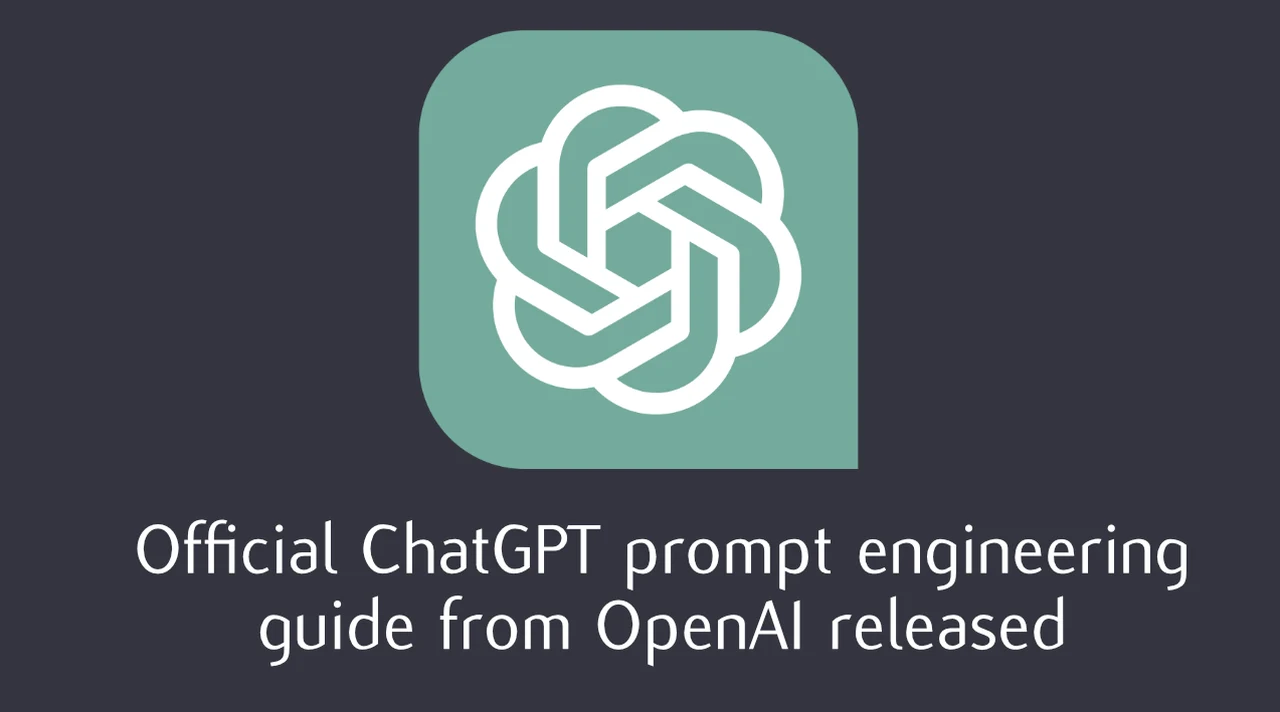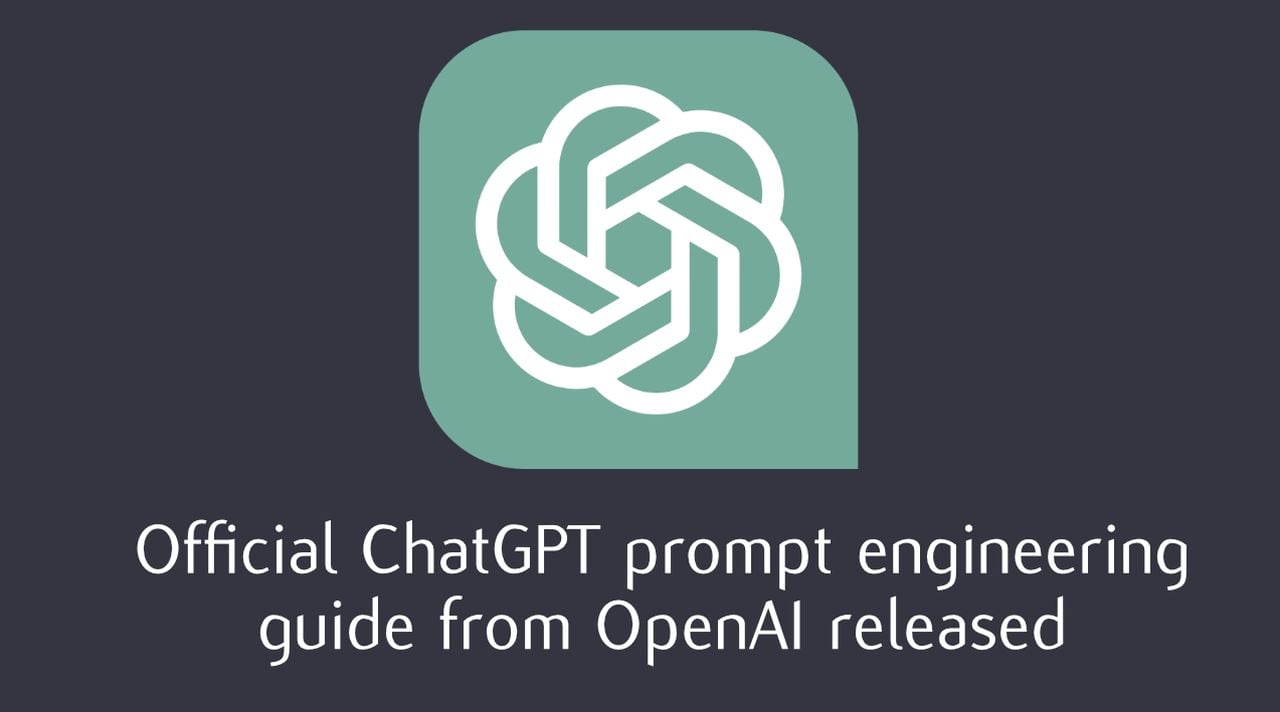
OpenAI has recently unveiled a valuable guide designed to help users get the most out of their interactions with ChatGPT. This guide is a crucial resource for anyone looking to obtain more precise and relevant answers from the AI, regardless of their technical background. By applying the strategies outlined in the guide, users can significantly improve the quality of their conversations with ChatGPT, whether they’re using its API or simply chatting informally. OpenAI explains a little more about the new prompt engineering guide they have created to help ChatGPT users obtain better results.
“This guide shares strategies and tactics for getting better results from large language models (sometimes referred to as GPT models) like GPT-4. The methods described here can sometimes be deployed in combination for greater effect. We encourage experimentation to find the methods that work best for you.
Some of the examples demonstrated here currently work only with our most capable model, gpt-4. In general, if you find that a model fails at a task and a more capable model is available, it’s often worth trying again with the more capable model.”
As you probably already know if you’re looking to enhance your interactions with ChatGPT, it’s important to start with clear instructions. Providing detailed context can lead to responses that are more closely aligned with your needs. If you’re seeking answers for a particular scenario, consider using persona adoption, which involves instructing ChatGPT to take on a specific character or role for responses that are customized to your situation.
For more complex prompts, it’s helpful to use delimiters to separate different parts of your input. This makes it easier for the AI to understand and respond to your request effectively. If you’re dealing with a series of actions, be sure to outline the steps clearly. This organizational approach helps ChatGPT to structure its responses in a logical way.
New OpenAI ChatGPT prompt engineering guide
Here are some other articles you may find of interest on the subject of OpenAI custom GPTs :
It’s also beneficial to indicate the format you want for the output, and if necessary, provide examples. This can guide the AI in crafting its responses. If you need a concise answer, make sure to specify the desired length to ensure the response is to the point.
6 ChatGPT prompt engineering principles from OpenAI
- Clear Instructions: Directly convey your needs. For concise answers, request brevity; for more advanced content, request expert-level responses. Clearly state your preferred format. Precision in your instructions enhances the model’s response accuracy. Otherwise you are leaving it up to the model to guess what you mean.Tactics:
- Provide detailed queries for tailored responses.
- Request the model to assume a specific persona.
- Use clear markers to separate different parts of your input.
- Define the steps needed to accomplish a task.
- Offer examples.
- Indicate the desired output length.
- Supply reference texts.
- Use Reference Texts: Language models can generate incorrect information, particularly on obscure topics or when asked for specific references. If we can provide a model with trusted information that is relevant to the current query, then we can instruct the model to use the provided information to compose its answer. Providing reference materials can significantly reduce inaccuracies.Tactics:
- Direct the model to use a reference text for answers.
- Request answers with citations from the provided text.
- Divide complex tasks into smaller, manageable subtasks.
- Simplify Complex Tasks: For tasks in which lots of independent sets of instructions are needed to handle different cases, it can be beneficial to first classify the type of query and to use that classification to determine which instructions are needed. This can be achieved by defining fixed categories and hardcoding instructions that are relevant for handling tasks in a given category. Break down complex requests into simpler components, similar to modular programming. This reduces errors and redefines the task as a sequence of simpler steps.Tactics:
- Apply intent classification to pinpoint relevant instructions.
- In long dialogues, summarize or filter previous interactions.
- Summarize extensive documents in parts, then compile a comprehensive summary.
- Thoughtful Processing: Sometimes we get better results when we explicitly instruct the model to reason from first principles before coming to a conclusion. Like solving a math problem, models benefit from time to “think”. Encouraging a step-by-step reasoning approach leads to more accurate responses.Tactics:
- Instruct the model to methodically work through its answer.
- Use an inner monologue or a series of queries to guide the model’s reasoning.
- Ask the model to review and add to its previous responses.
- Use External Tools: Leverage tools to address the model’s limitations. For instance, text retrieval systems can inform the model about relevant documents, and code execution engines can assist with calculations. A model can leverage external sources of information if provided as part of its input. This can help the model to generate more informed and up-to-date responses. For example, if a user asks a question about a specific movie, it may be useful to add high quality information about the movie (e.g. actors, director, etc…) to the model’s input.Tactics:
- Implement embeddings-based search for efficient knowledge retrieval.
- Utilize code execution for precise calculations or to use external APIs.
- Provide the model with specific functional capabilities.
- Systematic Testing: Sometimes it can be hard to tell whether a change — e.g., a new instruction or a new design — makes your system better or worse. To ensure improvements are effective, test them thoroughly. Changes that work well in isolated cases may not perform as well overall. A comprehensive test suite helps in validating modifications.Tactic:
- Compare model outputs against a set of gold-standard answers.
For examples of all 6 OpenAI prompt engineering principles for getting better results from ChatGPT jump over to the official ChatGPT prompt engineering guide published on the OpenAI website.
When it comes to more advanced techniques in prompt engineering, if you’re incorporating external information, it’s a good idea to provide reference text to help inform ChatGPT’s responses. For tasks that are particularly complex, consider breaking them down into smaller, more manageable subtasks. This not only simplifies the interaction for you but also for the AI.
Developers looking to further refine responses can do so by integrating external knowledge bases or APIs, which can enhance the AI’s ability to retrieve information. Allowing ChatGPT some time to process information can also result in more thoughtful responses.
It’s useful to systematically test different prompts to determine which ones are the most effective, and then refine your approach based on what you learn.
The guide from OpenAI comes with practical examples and is available as a downloadable PDF, making it accessible and user-friendly. For those who want to delve deeper into the world of AI and prompt engineering, Skill Leap AI offers comprehensive courses. These educational resources can greatly improve your ability to interact with ChatGPT and similar AI systems.
By implementing the strategies from OpenAI’s guide, users can achieve more nuanced responses and a more satisfying experience when interacting with ChatGPT. These tips are invaluable for both developers and everyday users, enabling them to communicate with the AI more effectively and leverage the full potential of this sophisticated tool.
Filed Under: Gadgets News
Latest timeswonderful Deals
Disclosure: Some of our articles include affiliate links. If you buy something through one of these links, timeswonderful may earn an affiliate commission. Learn about our Disclosure Policy.

